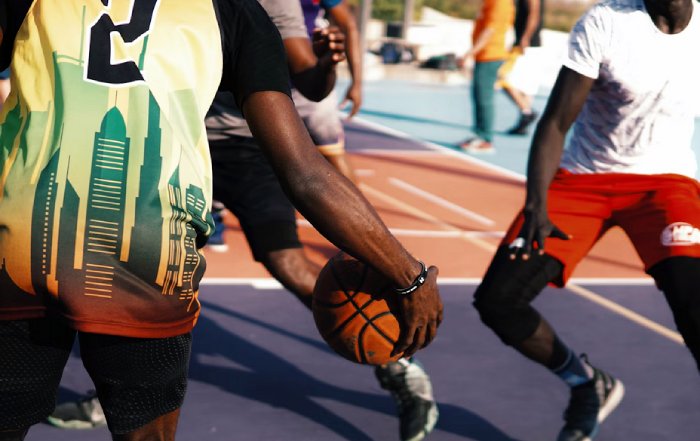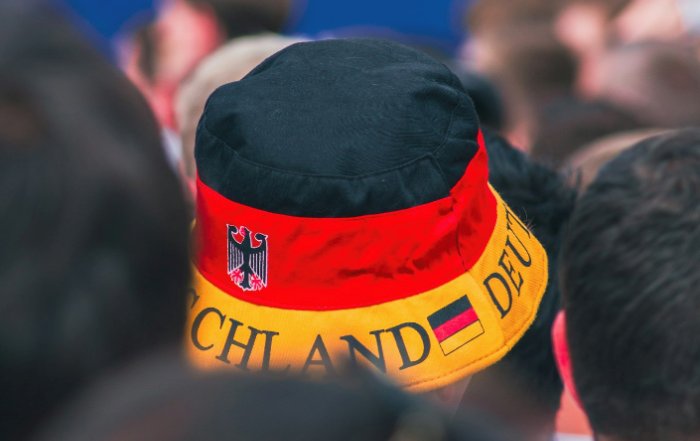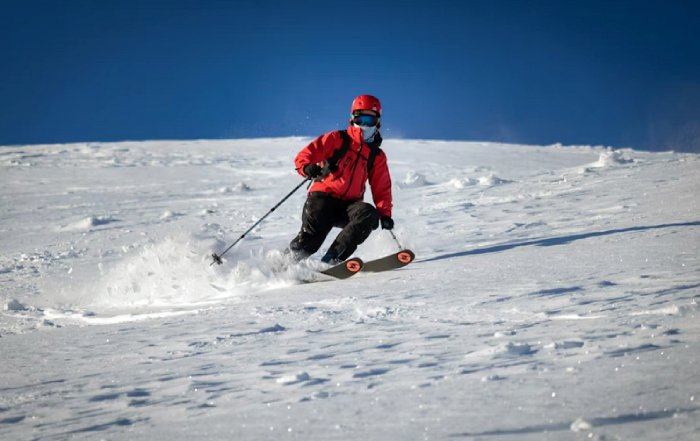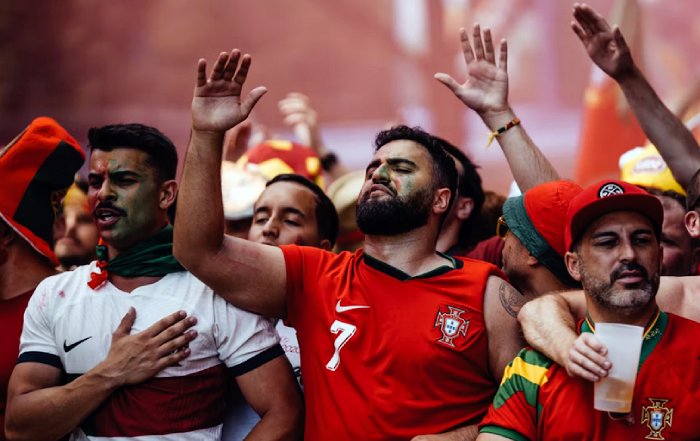The visibility and commercial influence of women’s sports have reached unprecedented heights. What was once considered a niche category within global athletics has transformed into a mainstream economic, cultural, and social movement. The combination of increased media coverage, equitable pay campaigns, and dynamic sponsorship deals has positioned women athletes not just as sports icons but as powerful ambassadors of global brands. On sportyfusion.com, this transformation is viewed as one of the most compelling shifts in the modern sports and business ecosystem—one that underscores how branding in women’s sports is now integral to global marketing strategies and the redefinition of athletic identity.
Over the last decade, major corporations have recognized that sponsoring women’s sports aligns their brands with authenticity, inclusivity, and social progress. This has altered the sponsorship landscape dramatically. Global giants like Nike, Adidas, Coca-Cola, Visa, and Procter & Gamble have expanded their investments in women-led athletic initiatives and tournaments such as the FIFA Women’s World Cup, the WNBA, and the Women’s Tennis Association (WTA). Beyond the financial injection, these partnerships have catalyzed social change and consumer perception. Modern audiences expect brands to take stances that mirror their values—supporting gender equality, diversity, and representation in sport being among the most visible ways to achieve that alignment.
Women’s sports are no longer framed as secondary to men’s leagues. With digital streaming, social media influence, and athlete-driven content creation reshaping global fandom, athletes like Serena Williams, Alex Morgan, and Megan Rapinoe have become influential brand builders and thought leaders. Their collaborations with companies that emphasize empowerment have further blurred the lines between athletic performance and corporate advocacy.
To understand this transformation, one must explore how branding trends in women’s sports are reshaping global sponsorship strategies, cultural narratives, and the business models of both traditional and digital sports media.
Learn more about the intersection of sports and business at Sporty Fusion Business.
The Shift in Sponsorship Dynamics: From Tokenism to Equity
The early 2000s marked a time when corporate sponsorship in women’s sports was largely symbolic—often a fraction of the investment directed toward male athletes or events. Companies were hesitant to commit significant advertising budgets, believing women’s sports lacked sufficient return on investment. Fast forward to 2025, and that perception has been thoroughly debunked. The UEFA Women’s Champions League and the Women’s Super League (WSL) in the United Kingdom now attract viewership figures rivaling mid-tier men’s football leagues. Sponsorships are driven by engagement, social media traction, and brand alignment rather than outdated assumptions about gendered market potential.
The evolution of sponsorship strategies mirrors broader changes in consumer behavior. Brands today seek connection, authenticity, and cause-based marketing. Visa’s sponsorship of the UEFA Women’s Championship, for example, was explicitly tied to supporting women in leadership and finance, creating synergy between its corporate mission and its sports partnerships. Similarly, Barclays’ long-term investment in women’s football in the UK has elevated the league’s infrastructure, making it more commercially viable and professionally stable.
The increasing participation of media-tech companies like Meta, Google, and TikTok has also expanded sponsorship formats. Campaigns are no longer confined to billboards or jerseys but extend to interactive digital content, fan engagement hubs, and real-time social experiences. These innovations help brands deepen loyalty and measure engagement metrics with precision—an essential aspect of modern sports marketing.
The underlying economic logic is compelling. Research by Nielsen Sports found that 84% of sports fans are now interested in women’s sports, with younger audiences showing particularly high engagement across digital platforms. These trends redefine sponsorship not as a philanthropic act but as a competitive investment in high-growth cultural capital.
For insights on digital engagement in sports, visit Sporty Fusion Technology.
Athletes as Personal Brands: Redefining Influence and Identity
In the modern era, women athletes are no longer dependent solely on media networks to amplify their voices. The democratization of digital platforms—Instagram, YouTube, X (formerly Twitter), and TikTok—has enabled athletes to become their own content creators, influencers, and entrepreneurs. Their brands transcend athletic achievement, extending into lifestyle, fashion, advocacy, and wellness.
Naomi Osaka, for example, has combined her tennis legacy with a strong stance on mental health and identity representation. Her partnerships with Louis Vuitton, Nike, and Sweetgreen embody a multidimensional narrative of wellness, sustainability, and authenticity. Similarly, Simone Biles, one of the most decorated gymnasts in history, has leveraged her global platform to advocate for mental health awareness and athlete rights, partnering with Athleta instead of more traditional corporate sponsors that prioritize visibility over values.
This self-branding strategy aligns closely with consumer preferences for authenticity over performance perfection. Millennials and Gen Z audiences value transparency, purpose, and emotional connection. Female athletes have capitalized on this by creating personal narratives that humanize elite sports. Their journeys—marked by resilience, social advocacy, and cultural expression—reflect broader movements in contemporary branding.
The influence extends far beyond traditional media. A generation of emerging athletes from Spain, Australia, Brazil, and Japan are building global audiences without intermediaries. They engage directly with fans, share training routines, behind-the-scenes insights, and social causes—reinforcing their dual identity as athletes and lifestyle influencers. This shift is pivotal to understanding the future of corporate sponsorships in women’s sports, where authenticity and alignment are more valuable than mere visibility.
For more cultural perspectives on sports, visit Sporty Fusion Culture.
Media, Streaming, and Visibility: The Power of Storytelling
The rise of digital broadcasting platforms has revolutionized visibility for women’s sports. Traditional media coverage often marginalized female athletes, relegating their events to minor time slots or secondary channels. However, the advent of streaming services like DAZN, ESPN+, and Amazon Prime Video Sports has democratized access and broadened audience reach. DAZN’s exclusive coverage of the UEFA Women’s Champions League is often cited as a landmark in global sports broadcasting, setting new benchmarks for production quality and accessibility.
Moreover, storytelling has become central to branding. Documentaries and series such as “Angel City” (following the NWSL team founded by Natalie Portman) or “Surf Girls Hawaii” have humanized athletes and attracted diverse audiences. These narratives go beyond scores and trophies, exploring themes of identity, perseverance, and equality. Streaming networks understand that emotional resonance drives engagement—and female athletes’ stories resonate powerfully with viewers seeking inspiration and authenticity.
This visibility has also encouraged advertisers to rethink their creative strategies. Campaigns that once relied on stereotypical portrayals of femininity now emphasize empowerment and determination. For instance, Nike’s “Dream Crazier” campaign, narrated by Serena Williams, celebrated women breaking barriers in sports traditionally dominated by men. The storytelling approach—focused on emotion, struggle, and triumph—helped redefine brand alignment around empowerment rather than aspiration alone.
For more updates on how sports media and innovation are reshaping global narratives, visit Sporty Fusion News.
The Rise of Women’s Sports Leagues and Global Market Expansion
The structural growth of women’s sports leagues around the world has fueled commercial confidence. The establishment and professionalization of leagues in football, basketball, cricket, and even motorsport reflect the momentum toward sustainable market development. The Women’s National Basketball Association (WNBA) in the United States, the FA Women’s Super League (FA WSL) in the United Kingdom, and the Women’s Big Bash League in Australia have achieved record-breaking attendance and sponsorship deals over the last three years.
The recent inclusion of women’s events in motorsport through initiatives like F1 Academy and Extreme E demonstrates the diversification of the female sports economy. These leagues have benefited from strategic corporate backing—Deloitte, Heineken, and Puma, among others—seeking to associate their brands with innovation, inclusion, and future-ready audiences.
The market expansion is not limited to Western economies. Asia, South America, and Africa are experiencing surging interest in women’s leagues. In Japan and South Korea, women’s football academies are thriving, while Brazil and South Africa are emerging as hubs for youth development. Corporate investment follows these trends, as companies aim to capture the loyalty of regional fanbases in high-growth markets.
According to EY’s “Women. Fast Forward” initiative, gender equity in sports has become a strategic pillar of global business sustainability. As more brands adopt Environmental, Social, and Governance (ESG) frameworks, investing in women’s sports represents both a moral and financial commitment to inclusive growth.
To explore more on performance and development in global sports, visit Sporty Fusion Performance.
Corporate Sponsorships as Agents of Social Change
Corporate sponsorships in women’s sports are no longer transactional—they have become strategic partnerships that drive social change. In 2025, global brands recognize that supporting women athletes is not just an act of inclusion but a clear reflection of corporate responsibility and cultural leadership. Major companies have integrated gender equality into their sustainability frameworks, making sports a visible platform for advancing these commitments. For instance, Unilever’s Dove brand has partnered with the WNBA and the NBA to launch campaigns promoting body confidence and self-esteem among young girls. This collaboration blends commercial goals with advocacy, transforming sponsorship into a purpose-driven alliance that impacts both sports and society.
Similarly, Visa’s multi-year investment in women’s football worldwide, including partnerships with UEFA, FIFA, and national federations, showcases how corporations are building ecosystems rather than isolated campaigns. Visa’s sponsorships extend beyond financial contributions—they include mentorship programs for women in sports management and scholarships for aspiring athletes. These efforts reflect a growing understanding that long-term brand value is derived from authenticity, equity, and the creation of positive social narratives.
Companies that once focused on performance metrics such as viewership and sales conversions are now equally invested in measuring social impact. They track improvements in representation, leadership opportunities for women in sports organizations, and fan engagement in community initiatives. The ESG movement has played a major role in this transformation. Under the “S” pillar—social impact—brands find measurable ways to contribute to gender equity, youth development, and mental wellness in sports.
The result is a sponsorship ecosystem that aligns economic returns with social purpose. Brands like Nike, Gatorade, and Under Armour have embedded equality-driven narratives into their campaigns. Adidas, for instance, has pledged equal investment in marketing its women’s lines as it does its men’s lines, signaling a historic shift toward budget parity in sports advertising.
Readers can explore how health and empowerment campaigns are evolving in sports at Sporty Fusion Health.
Branding Beyond the Field: Fashion, Wellness, and Lifestyle Integration
A defining trend in 2025 is the crossover between women’s sports branding and lifestyle markets. The line between athletic apparel and everyday fashion has blurred, creating lucrative partnerships that transcend the field. This intersection of performance and style has birthed collaborations between athletes and major fashion houses such as Gucci, Balenciaga, and Stella McCartney, each integrating functionality, sustainability, and empowerment into their designs.
Athletes like Alex Morgan and Ashleigh Barty represent this evolution. They endorse not just sportswear but holistic lifestyle brands that emphasize wellness, mental balance, and personal authenticity. For corporations, partnering with female athletes offers access to audiences that engage with fashion, sustainability, and wellness simultaneously. The global wellness economy, valued at over $5 trillion in 2025, benefits from these partnerships as athletes become symbols of balance, health, and resilience.
Furthermore, the rise of athleisure as a dominant fashion segment underscores this cultural shift. Brands such as Lululemon, Alo Yoga, and Gymshark have built entire marketing ecosystems around active women who lead aspirational yet relatable lives. Their collaborations with professional athletes reinforce brand credibility, offering consumers a blend of authenticity and performance. The branding narrative is now holistic—connecting physical excellence, mental wellness, and aesthetic appeal.
As these worlds converge, women’s sports become a cultural touchstone that reflects global conversations about self-expression, inclusivity, and sustainability. The sponsorship models that merge sports with lifestyle resonate deeply with consumers, creating emotional connections that traditional advertising could never achieve.
Learn more about lifestyle and culture trends shaping sports identity at Sporty Fusion Lifestyle.
The Economic Power of Women’s Sports: A New Market Frontier
The commercial metrics around women’s sports reveal an ecosystem that is not just growing but thriving. By 2025, women’s sports collectively represent a $1.3 billion market, according to projections by Deloitte, with double-digit growth expected annually over the next five years. This surge is driven by expanding media rights deals, global merchandise sales, and long-term brand partnerships that reflect sustainable profitability.
For example, the 2023 FIFA Women’s World Cup generated record revenues exceeding $570 million, while the WNBA’s media deal with Disney and Amazon solidified its global reach. Broadcasters now view women’s sports as key content assets rather than supplemental coverage. The sponsorship activation around these events—from Budweiser’s WSL campaigns to Google’s “Search On” initiative supporting women athletes—illustrates a marketplace in full commercial bloom.
Corporate engagement is also diversifying geographically. While the United States and Europe remain core markets, Asia-Pacific nations like Japan, Singapore, and South Korea have become centers for women’s sporting innovation. Japan’s professional women’s football league, the WE League, has attracted international sponsors eager to tap into Asia’s rapidly growing sports viewership. Similarly, India and Brazil are emerging as growth engines for women’s cricket and football respectively, drawing attention from brands seeking global expansion.
Investment in women’s sports also aligns with corporate priorities around brand reputation and risk management. Supporting gender equity in sports positions companies as progressive and socially conscious, appealing to a generation of consumers who evaluate brands through ethical and environmental lenses.
Readers can follow global business trends shaping sports investment at Sporty Fusion World.
The Role of Technology in Sponsorship Analytics and Fan Engagement
Technology has redefined the mechanics of sports sponsorship. Advanced analytics, artificial intelligence, and digital engagement tools have enabled brands to measure sponsorship effectiveness with unprecedented accuracy. In 2025, corporate sponsors no longer rely solely on exposure metrics like logo impressions—they monitor data on sentiment analysis, conversion rates, and fan loyalty through AI-driven dashboards.
Platforms such as Blinkfire Analytics, OpenSponsorship, and Hookit provide real-time insights into how sponsorships perform across digital ecosystems. These tools quantify engagement on social media, track brand mentions, and assess the monetary value of athlete influence. This data-centric approach empowers both athletes and brands to negotiate partnerships based on measurable impact rather than assumptions.
Additionally, virtual and augmented reality technologies are revolutionizing fan experiences. Immersive digital environments allow fans to attend training sessions, locker room events, and press conferences in real time. Companies like Meta and Sony are pioneering virtual reality fan zones where branded experiences enhance emotional connection. These innovations enable sponsors to build deeper narratives, transforming passive spectators into active brand participants.
Blockchain and NFT technologies have also entered the sponsorship ecosystem. Women’s leagues and athletes are issuing limited-edition digital collectibles that connect directly to brand campaigns, providing an additional revenue stream while fostering fan exclusivity. The Australian Women’s Cricket League and US Women’s Soccer Federation have launched NFT marketplaces linked to key historical moments, merging technology, art, and sports culture in innovative ways.
To explore how technology continues to shape modern sports sponsorships, visit Sporty Fusion Technology.
Early 2000sTokenism Era
Corporate sponsorship in women's sports was largely symbolic, representing only a fraction of investment directed toward male athletes.
2010-2015Digital Democratization
Athletes leverage social media platforms to become content creators and influencers, building personal brands independent of traditional media.
2015-2020Streaming Revolution
DAZN, ESPN+, and Amazon Prime democratize access to women's sports with dedicated coverage and premium production quality.
84% fan interest 2020-2023ESG Integration
Corporations embed gender equality into sustainability frameworks, making women's sports partnerships strategic ESG pillars.
2023Record-Breaking Growth
FIFA Women's World Cup generates over $570 million in revenue, proving sustainable commercial viability.
$570M revenue 2024Athlete Entrepreneurship
Female athletes launch personal ventures—Serena Ventures, KINLÒ, TOGETHXR—transforming from endorsers to brand owners.
2025Data-Driven Equality
AI-powered analytics and standardized metrics ensure transparent accountability in sponsorship equity and media coverage.
$1.3B market 2025-2030Global Cultural Catalyst
Women's sports represent the new standard for authentic, purpose-driven sponsorship—merging technology, sustainability, and equality.
Diversity, Representation, and the Rise of Inclusive Branding
Modern consumers expect diversity not as a token gesture but as a fundamental principle. This cultural shift has profoundly influenced corporate sponsorship strategies in women’s sports. Inclusive branding—where diverse identities are celebrated and represented authentically—has become both a moral imperative and a commercial advantage.
Sponsorships now extend beyond gender equality to include intersectional representation. Campaigns highlight athletes from diverse racial, cultural, and socio-economic backgrounds, as well as those advocating for LGBTQ+ rights and disability inclusion. The Paralympic movement, in particular, has been a catalyst for redefining public perceptions of capability and strength. Brands like Toyota and Samsung have invested in inclusive sponsorships that reflect empowerment through diversity.
Athletes such as Caster Semenya and Brittney Griner have also become symbols of resilience and social justice. Their partnerships often transcend commercial objectives, focusing on advocacy, awareness, and visibility. For corporations, aligning with such athletes signals authenticity and courage—qualities that resonate deeply in a marketplace that values transparency.
Educational programs and mentorship initiatives supported by sponsors further reinforce inclusion. Collaborations between sports organizations, NGOs, and brands are creating pathways for girls and women in regions where sports participation was historically restricted. This combination of commercial strategy and humanitarian impact underscores the new era of ethical sponsorship in global sports.
Explore more about ethical and social awareness in global sports at Sporty Fusion Ethics.
The Reinvention of Sponsorship Storytelling
As women’s sports continue to mature into a global economic and cultural powerhouse, brands are moving beyond traditional advertising and into sophisticated storytelling frameworks that emphasize shared values, purpose, and long-term community impact. The most successful campaigns in 2025 are not merely transactional sponsorships—they are narrative collaborations that intertwine corporate ethos with athlete identity and social relevance.
Companies like Nike, Gatorade, and Red Bull have mastered the art of narrative marketing through powerful visual storytelling, focusing on moments of transformation rather than competition. Nike’s “You Can’t Stop Us” campaign, which featured women athletes across diverse sports and geographies, was not only a commercial success but also a social commentary on resilience and unity. Similarly, Gatorade’s “Fuel Tomorrow” initiative integrates sports science with stories of community engagement, positioning the brand as a catalyst for youth empowerment rather than a mere performance product.
These campaigns demonstrate how corporate storytelling now extends across multiple digital platforms. A single narrative may unfold through short documentaries on YouTube, interactive Instagram stories, live discussions on LinkedIn, and behind-the-scenes footage shared by the athletes themselves. This multiplatform storytelling creates emotional continuity, encouraging fans to engage not just with an event but with a shared mission.
Women athletes, in particular, bring unparalleled emotional resonance to brand narratives. Their stories of perseverance, leadership, and social advocacy align naturally with broader human themes. A recent example is Coco Gauff’s collaboration with New Balance, which emphasizes individuality and courage in the face of adversity. The campaign reached millions not just because of her athletic success but because it framed her story as one of generational confidence and cultural authenticity.
At its core, storytelling in women’s sports branding has become a tool for empathy. It connects global audiences across cultural and economic divides, reinforcing the idea that sports—especially women’s sports—are not only about winning but about progress, identity, and purpose.
For more insights on the cultural evolution of sports branding, visit Sporty Fusion Culture.
Economic Sustainability and Long-Term Brand Partnerships
The long-term sustainability of women’s sports branding depends on structural investment rather than short-term marketing bursts. Historically, many sponsorships were limited to specific tournaments or brief promotional cycles. However, by 2025, corporations have recognized the value of consistent, multi-year partnerships that provide both stability for athletes and enduring brand association.
Adidas’ multi-year agreement with the UEFA Women’s Champions League and Visa’s eight-year extension of its FIFA Women’s World Cup partnership exemplify this shift toward longevity. These commitments are not just about visibility; they are strategic investments in brand alignment, data collection, and community development. For brands, the benefits include sustained audience loyalty and improved return on investment through long-term consumer engagement.
From the athletes’ perspective, long-term sponsorships ensure financial stability, enabling them to focus on training, recovery, and performance excellence. For governing bodies, it allows better planning and infrastructure investment—leading to improved facilities, broadcast quality, and grassroots programs that nurture future generations.
Moreover, the economics of women’s sports are increasingly supported by diversified revenue models. Merchandising, digital content licensing, ticketing innovations, and social commerce all contribute to the ecosystem’s sustainability. Streaming platforms such as DAZN and Amazon Prime Sports now bundle women’s tournaments into their global sports packages, ensuring consistent exposure and subscription-driven revenue.
The result is an interdependent ecosystem where corporate sponsorships not only fund sports but help shape their evolution. It marks a fundamental shift from “supporting” women’s sports to “building with” them—a distinction that reflects the maturity and mutual benefit of modern partnerships.
Explore more about business and financial growth in sports at Sporty Fusion Business.
The Intersection of ESG Goals and Women’s Sports
As corporations worldwide integrate Environmental, Social, and Governance (ESG) principles into their operations, women’s sports have emerged as a key pillar within the social impact domain. By 2025, sponsorship decisions are frequently evaluated through the lens of ESG metrics, with brands prioritizing initiatives that advance gender equality, community development, and inclusive access to sports opportunities.
Global firms such as Deloitte, PwC, and EY have incorporated gender equity in sports into their broader sustainability agendas. Their research consistently highlights how investment in women’s sports yields measurable returns in brand reputation, employee engagement, and customer trust. These firms actively partner with sports organizations to establish frameworks for transparent reporting on equity initiatives, pay parity, and leadership diversity.
For multinational brands, associating with women’s sports also reinforces their environmental and governance commitments. Adidas and Puma, for instance, are now producing sustainable sportswear lines for female athletes, made from recycled materials and designed with carbon-neutral manufacturing processes. These eco-conscious products embody both environmental responsibility and social empowerment—two forces that increasingly define modern brand identity.
Furthermore, brands are creating integrated ESG storytelling campaigns that connect female athleticism with planetary well-being. Campaigns like Patagonia’s “Fair Play for the Planet” merge sports with environmental stewardship, presenting athletes as advocates for both equality and ecological preservation. This evolution underscores a broader narrative: that empowering women in sports is inseparable from creating a sustainable and equitable global society.
To explore environmental and ethical dimensions of modern sports, visit Sporty Fusion Environment.
Globalization and Localization: Tailoring Sponsorship Strategies Across Markets
One of the defining features of women’s sports branding in 2025 is its ability to scale globally while maintaining local authenticity. Corporate sponsors now operate with a dual strategy—global brand narratives reinforced by region-specific storytelling. This balance ensures cultural resonance and maximizes market relevance.
In Europe, sponsorships often emphasize community building and heritage. Brands such as Barclays, Heineken, and H&M leverage women’s football and athletics to highlight values like unity, tradition, and regional pride. In contrast, North America’s sponsorship strategies are dominated by themes of empowerment, individuality, and equality, reflecting the sociopolitical momentum around gender rights and workplace inclusion.
In Asia, corporate sponsorships are more closely tied to youth engagement and education. Companies like Samsung, Toyota, and Alibaba have established scholarship programs and youth training academies for young female athletes. These initiatives position sports as a gateway to personal development, leadership, and digital literacy. Similarly, in Africa and South America, sponsors focus on social mobility and infrastructure development—investing in sports academies, health initiatives, and community entrepreneurship programs that build sustainable ecosystems.
This localized approach allows global corporations to adapt their brand voice while maintaining the universal appeal of empowerment. It ensures that the narrative of women’s sports—though globally celebrated—remains grounded in local aspirations, values, and challenges.
For perspectives on international sports dynamics, visit Sporty Fusion World.
Athlete-Driven Entrepreneurship: Building Brands from Within
A major trend reshaping the sponsorship ecosystem is the rise of athlete-led businesses and self-owned brands. Female athletes are increasingly assuming entrepreneurial roles, leveraging their visibility to launch products, media ventures, and advocacy platforms. This shift blurs the line between sponsorship recipient and brand creator, empowering athletes to dictate their narratives and financial futures.
Serena Williams’ investment firm Serena Ventures, Naomi Osaka’s KINLÒ skincare line, and Alex Morgan’s media company TOGETHXR illustrate this evolution. These ventures embody the convergence of sports, commerce, and culture, where athletes utilize their influence to champion equity, wellness, and creativity. Their businesses often collaborate with corporate sponsors rather than depend on them, redefining partnership dynamics as symbiotic rather than hierarchical.
This entrepreneurial model also reshapes how sponsorships are structured. Instead of traditional endorsement contracts, many athletes now negotiate equity stakes in the companies they represent. Such arrangements create deeper alignment between brand success and athlete advocacy. It transforms athletes into stakeholders who are motivated to contribute to product development, marketing strategy, and long-term growth.
In this new landscape, brands that embrace athlete entrepreneurship—rather than compete with it—are most likely to thrive. Co-branded ventures, capsule collections, and joint social initiatives reflect this cooperative spirit, signaling the emergence of an athlete economy where personal identity and commercial innovation are inseparable.
Learn more about the intersection of innovation and sports branding at Sporty Fusion Brands.
The Digital Renaissance: Social Media, Data, and Direct Fan Connectivity
The heartbeat of modern women’s sports branding lies in the digital arena, where social media and analytics have transformed how athletes, teams, and sponsors connect with fans. In 2025, the concept of fan engagement is no longer limited to televised moments or post-game interviews—it thrives in real-time, across platforms like Instagram, TikTok, YouTube, and X. Female athletes, in particular, have mastered the art of digital storytelling, turning every match, workout, or advocacy statement into a touchpoint for millions of followers worldwide.
This democratization of communication has profoundly shifted power dynamics. Brands no longer act as sole intermediaries between athletes and audiences; instead, they collaborate on content that fans perceive as authentic, personal, and emotionally resonant. Nike’s collaboration with Megan Rapinoe, for instance, wasn’t just an ad—it became a movement that merged fashion, feminism, and equality under one consistent digital voice. Similarly, Red Bull’s partnerships with extreme sportswomen combine cinematic storytelling with athlete-controlled narratives, creating a seamless fusion of performance and personality.
Analytics play an equally critical role in this transformation. Tools powered by AI-driven sentiment analysis track how fans engage with athletes and brand content in real time. Engagement metrics such as retention rate, comment sentiment, and video completion rate inform future sponsorship strategies with surgical precision. These data insights allow corporations to invest more confidently in women’s sports, knowing exactly which athletes and content formats generate the strongest emotional and commercial returns.
At the same time, social platforms have evolved into marketplaces. Features like live shopping and integrated brand links allow followers to purchase products endorsed by their favorite athletes instantly. This seamless convergence of content and commerce blurs the boundaries between fandom and consumerism, making every post a potential transaction. The power of digital engagement thus transforms sponsorship from static branding into a dynamic ecosystem where athletes, brands, and fans co-create value.
Learn more about the evolving digital landscape of sports and performance at Sporty Fusion Training.
The Emotional Currency of Women’s Sports
While men’s sports often thrive on rivalries and spectacle, women’s sports possess a distinct emotional currency rooted in storytelling, community, and shared values. This emotional resonance is one of the key factors behind the surge in brand partnerships. Emotional marketing research consistently shows that campaigns appealing to empathy and social connection drive deeper brand loyalty—and women’s sports naturally embody these themes.
Audiences connect not only with victories but also with vulnerability, advocacy, and purpose. When Simone Biles publicly prioritized mental health during the Olympics, her decision sparked global debate and empathy. Brands like Athleta and Visa responded by supporting her stance rather than penalizing it, emphasizing authenticity over perfection. This response built enormous trust among consumers who increasingly view ethical alignment as a form of brand currency.
Similarly, the US Women’s National Soccer Team’s equal pay campaign transcended sports to become a cultural landmark. It reinforced the idea that corporate sponsorship is not just about visibility—it’s about standing for something. Companies that aligned with this cause experienced surges in customer goodwill and digital engagement, proving that emotional alignment yields both social and economic dividends.
This fusion of emotional storytelling and brand ethics reflects a profound evolution in marketing psychology. Consumers now expect sincerity and continuity between brand actions and messaging. Women’s sports, with their inherent themes of resilience, progress, and inclusion, serve as powerful vessels for these values. The emotional depth of these narratives creates enduring brand relationships that transcend single campaigns or seasonal endorsements.
For additional perspectives on health, psychology, and human performance in sports, visit Sporty Fusion Health.
Education, Mentorship, and Legacy Building
The modern sponsorship model extends beyond monetary support; it invests in education, mentorship, and legacy creation. Corporations now view athlete development as a long-term partnership that includes holistic growth—physical, professional, and personal. Programs sponsored by Deloitte, Mastercard, and Coca-Cola fund leadership academies, career transition support, and digital literacy training for women athletes worldwide.
These initiatives aim to close the historical gap in career longevity and post-retirement opportunities. Unlike traditional sponsorships that focus on competition phases, these programs nurture the entire athlete lifecycle. They prepare women for entrepreneurship, brand management, and media presence, ensuring they remain influential long after they retire from active competition.
A striking example is Mastercard’s “She’s Next” program, which mentors women in business and extends to athletes transitioning into post-sports careers. Similarly, Nike’s Athlete Think Tank invites female athletes to collaborate on product design and brand strategy, effectively integrating them into corporate innovation pipelines.
This shift highlights the growing convergence between sports and education. The new generation of female athletes are not just participants; they are co-creators, strategists, and role models shaping the intellectual and commercial future of their respective disciplines.
By embedding mentorship and leadership training within sponsorship agreements, corporations ensure that empowerment becomes structural rather than symbolic. It builds a legacy in which today’s champions nurture tomorrow’s leaders, creating an enduring cycle of progress that transcends sports.
For features on leadership and social innovation through sports, visit Sporty Fusion Social.
Sustainability and the Conscious Consumer Movement
Another defining feature of women’s sports branding in 2025 is its alignment with the sustainability movement. The intersection between eco-conscious consumerism and sports marketing has become one of the most powerful forces shaping brand strategies worldwide. Women athletes have often been at the forefront of this transformation, using their influence to promote environmentally responsible products and sustainable business practices.
Adidas’ partnership with Parley for the Oceans, which produces footwear made from recycled marine plastics, has gained immense traction among female athletes and fans alike. Similarly, Patagonia’s sponsorship of women climbers and surfers integrates adventure sports with activism against climate change. These collaborations go beyond surface-level branding—they represent a shared mission to redefine success through sustainability and ethical production.
Athletes like Greta Thunberg’s contemporaries in sports, including professional surfer Leah Dawson and long-distance runner Lucy Bartholomew, exemplify this new advocacy-driven identity. Their brand partnerships emphasize conscious consumption, circular economy practices, and regenerative environmental policies.
From the corporate perspective, sustainability initiatives also mitigate risk. Aligning with environmentally aware athletes and organizations positions brands as leaders in ESG performance, attracting investors and consumers alike. The synergy between women’s sports and environmental responsibility appeals to younger demographics who prioritize planet-conscious brands when making purchasing decisions.
This green transformation demonstrates that sustainability is no longer a peripheral consideration in sponsorship—it is central to brand equity and athlete selection. Sponsors now seek ambassadors who personify balance between performance excellence and planetary well-being.
Readers can explore deeper discussions on environmental strategy and sustainability in sports at Sporty Fusion Environment.
Data-Driven Equality: Measuring Progress and Accountability
One of the most transformative trends in 2025’s sponsorship ecosystem is the rise of data-driven equality metrics. Corporations and sports organizations now rely on transparent data analytics to track representation, investment, and outcomes in women’s sports. This shift toward measurable accountability ensures that equality is not merely aspirational but enforceable.
The Women’s Sports Foundation, in collaboration with Deloitte and ESPNW, has established standardized metrics for evaluating gender equity across sponsorship deals, media coverage, and salary structures. These tools provide benchmarks that enable brands to assess the tangible impact of their inclusion policies.
Beyond transparency, these metrics influence consumer trust. Fans are increasingly aware of which companies genuinely support equality and which merely capitalize on it for publicity. Publicly accessible data reports reinforce authenticity and allow brands to differentiate themselves in a competitive sponsorship market.
This quantitative approach extends to media analytics as well. Networks now use AI algorithms to ensure balanced airtime and promotional investment between male and female sports. Broadcasters like BBC Sport, ESPN, and DAZN utilize these systems to optimize scheduling fairness and audience reach.
The ultimate goal is a virtuous cycle where visibility drives investment, and investment drives further growth. By embedding equality into measurable systems, the sports industry ensures that progress becomes systemic and sustainable.
For updates on sports innovation and performance analytics, visit Sporty Fusion Performance.
The Future Outlook: Women’s Sports as a Global Economic and Cultural Catalyst
By 2025, the global sports industry stands at a critical juncture where women’s sports represent not only growth potential but moral and cultural leadership. The convergence of technology, sustainability, entrepreneurship, and equality has elevated women athletes to the forefront of global influence. Their stories transcend borders and demographics, offering lessons in resilience, innovation, and unity.
Corporations have learned that sponsoring women’s sports is not just an investment in visibility—it’s an investment in the future of humanity’s collective values. The new era of sponsorships reflects collaboration rather than control, equality rather than tokenism, and vision rather than imitation.
From the boardrooms of Fortune 500 companies to the grassroots fields of Africa and Southeast Asia, a new social and economic framework is being built—one that treats sports as a medium for empowerment, inclusion, and long-term sustainability. The rise of women’s sports is not simply a business phenomenon; it is a movement that reshapes how societies define leadership, excellence, and progress.
As the 2030 horizon approaches, this transformation will only accelerate. Women’s leagues will continue to professionalize, digital fan engagement will deepen, and corporate partnerships will evolve into purpose-driven ecosystems that merge technology, education, and equity.
The future of sports branding, as showcased on SportyFusion.com, is not defined by gender but by authenticity, intelligence, and purpose. Women’s sports have proven that they are not a subcategory—they are the new standard for what modern sponsorship should aspire to be: inclusive, data-informed, emotionally resonant, and globally connected.
To stay informed about emerging stories and innovation in women’s sports worldwide, explore Sporty Fusion Sports and Sporty Fusion News.










